If you can dream it, you can do it
Published on December 21st, 2017
For the most part, technological advancement is the result of careful and slow evolution. But every once in a while someone seeks to leap the limits and change the landscape. Vlad Murnikov tells the story of such a case which could raise the level of high performance cruising catamarans.
Origins of Design.
It all started with a phone call from Australia:
“Hello, my name is Adam Kaplan and I am interested in a custom-designed fast cruising catamaran. A sailboat with a twist.
“My background is in racing cars and flying aerobatic aircraft. I also have experience over many years as a user of power boats. Therefore I have no particular interest in sails, sheets, halyards, reefing, vangs and all the other “hard work” that goes into sailing.
“Yes, I know all of that is the essence of sailing and what most people enjoy and are looking for. However what I am looking for is a solution that can get me around as fast as I am comfortable going with minimal noise, minimal energy consumption and minimal physical effort.
“I like your SpeedDream design concept and ultimately what I’d like to accomplish is a SpeedDream version of the cruising catamaran – avant-garde looking, super-fast and the most innovative boat on water! Can you do this?“
Three days later Adam was in my office in Massachusetts, jet-legged after a long flight, but eager to see my preliminary sketches.
As it turned out, Adam Kaplan is the ideal client every designer dreams about, a client who understands exactly what he wants to accomplish, has great ideas of his own and appreciates concepts and ideas you are creating for him. The result of our collaboration is mxCat88-Volante, arguably the most advanced cruising multihull in the world.
As per Adam’s design brief, this boat combines luxurious interior and all the creature comforts for the owner’s family and their guests with high speed (35 knots!) and simplicity of handling.
All this has been achieved thanks to the advanced hull design, and use of hydrofoils and wing sails in bi-plane configuration, turning sailing into a process somewhat similar to flying a plane. All controls are concentrated in the wheelhouse and could be manned by a single person with a few buttons and joy-sticks.
Exterior Design.
To start with, the boat is exotic and beautiful, looking fast even standing still. She is thoroughly modern with a hint of a stealth fighter or a spaceship thrown in. And yet there’s something classic in her proportions, her long, slender hulls, and her design details, a harmonious combination of gently curving surfaces and sharp creases.
And every curve and crease is hydrodynamicaly functional, serving to enhance performance, to cut effortlessly through the waves, to create lift, or cut the spray down. It goes without saying that her slim hulls combined with wave-piercing bows reduce pitching and slamming and greatly reduce the risk of pitch-pooling.
Wing Sails.
For the first time in cruising multihull design mxCat88-Volante features wing sails in a bi-plane configuration. This allows lowering the center of efforts and improving stability while maintaining generous sail area. Several rig options were explored and simulated using CFD analysis performed by Tyler Doyle of Doyle CFD.
Here’s Tyler’s summary of his research:
“Using free standing semi-rigid wings to power an eighty eight foot offshore catamaran offers a number of potential advantages over conventional rigs.
“In addition to providing outstanding performance, two other significant benefits of free standing wings are ease of use and safety. Conventional running rigging used on large yachts is often complicated and when highly loaded can be quite dangerous.
“A free standing wing has no running rigging and simply pivots about two large bearings mounted in the hulls. Trim is accomplished by rotating the wings and power adjustments made by changing the shape of the wing through the use of control surfaces.
“All this can be done from the safety and comfort of the internal command post. Operation becomes similar to flying an airplane, with push-button and lever controls. If necessary it could be fully automated.”
The bi-plane configuration is a structurally efficient design for a catamaran because the rotational bearings and support structure are located in the hulls instead of on the centerline where providing supporting structure is much more challenging. Burying wing’s steps in the hulls makes the structure significantly stronger, lighter and more durable.
Aerodynamically the bi-plane configuration is especially efficient when power reaching because of the flow interaction between the windward and leeward wings.
To be feasible for an offshore performance cruising catamaran, the wings need the ability to reduce area in heavy weather. One way to reduce area is to have the back sections of a two part wing retract into the forward sections. Another option is to have part of the wing surface flexible so that it can be furled.
Engineering of the “reefing” devices is still ongoing as we strive to find the most simple, rugged and reliable solutions. With modern techniques and advanced composite construction all of these goals can be achieved.
Hydrofoils.
Adding to the boat’s performance are also advanced hydrofoils, main C-foils and rudder T-foils. We have decided that for a cruising offshore catamaran full foiling, while exciting, is still more of a liability and could prove dangerous. Instead we designed foils to offset up to 75% of the boat’s full displacement, significantly reducing drag and improving performance.
Several foil configurations were explored, one of them utilizing an articulating mechanism, which allows us the ability to place the main foil closer to vertical while sailing upwind to increase lateral resistance, and closer to horizontal for reaching legs to increase lift. We expect upwind speed of 15-20knts, depending on the sea state, and reaching speeds up to 35knts.
Comfort and amenities.
A spacious and airy interior layout is fully customized to the client’s needs and desires. To keep the boat light, we haven’t tried to utilize every cubic inch of interior space and instead have kept hull’s forward sections light and empty.
The entire port hull is one big owner’s suite, with plenty of storage and lavishly equipped head featuring double sinks, large shower and even an enormous bathtub.
There is a nicely appointed guest suite in the starboard hull aft and two smaller cabins forward that could be used for crew or occasional guests.
The bridge connecting two hulls is one large open area featuring a spacious galley, salon with an entertainment center and huge wheelhouse up forward, equipped with comfortable captains chairs. All boat’s functions can be controlled from this command center.
A vast lifting swim platform, essentially your own private “beach’” spans the entire width between the hulls, creating an ideal area for sunbathing, swimming and launching water toys.
Eventually we plan to organize a limited production of mxCat88-Volante luxury yachts with each boat fully customized to the clients requirements.
Technical Data.
Length overall: 26.8m
Maximum beam: 9.8m
Displacement: 26t
Sail area: 380 sq. m


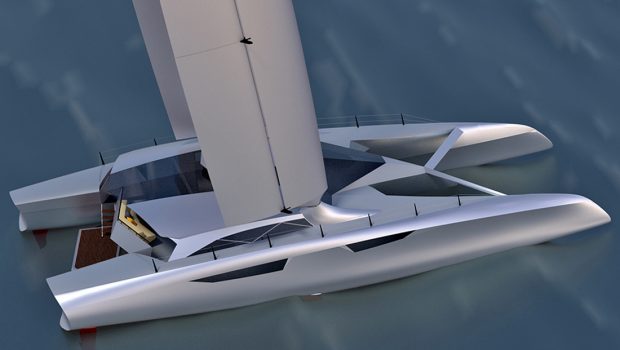

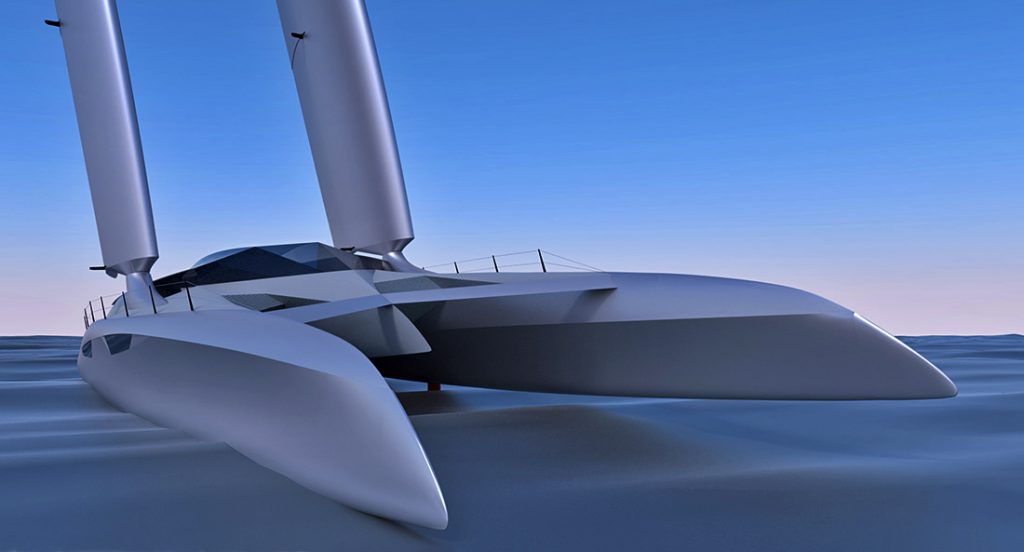
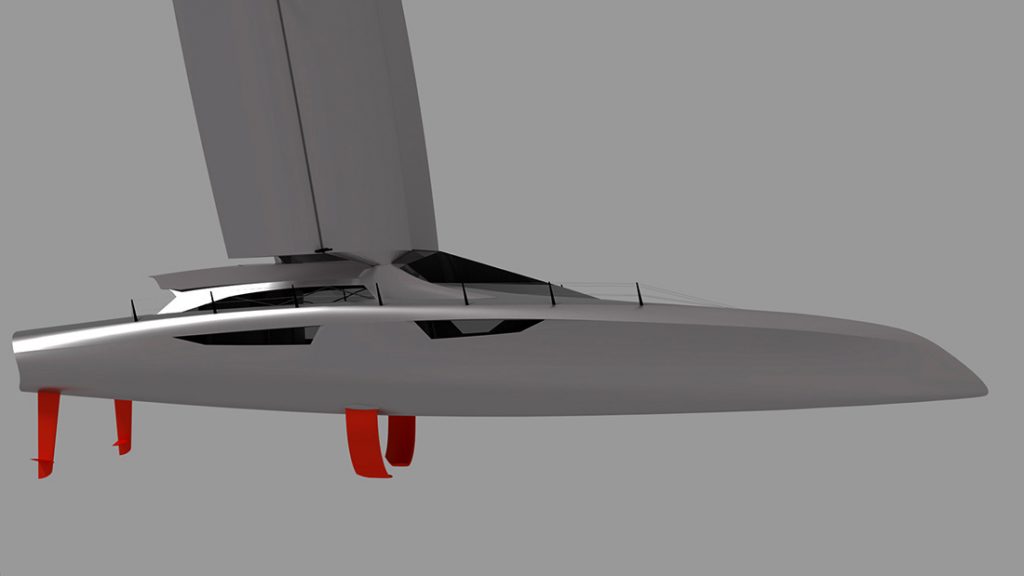
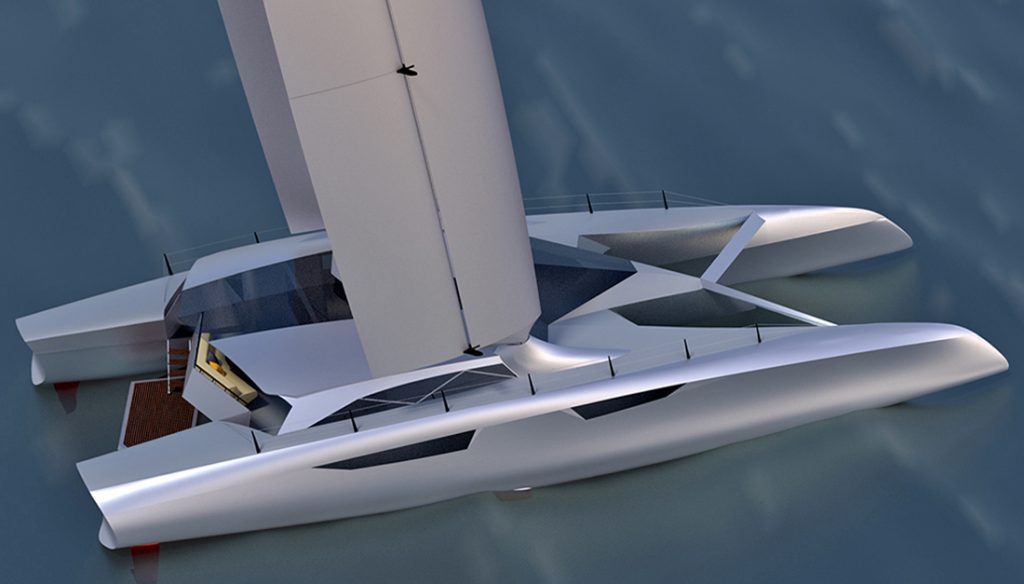
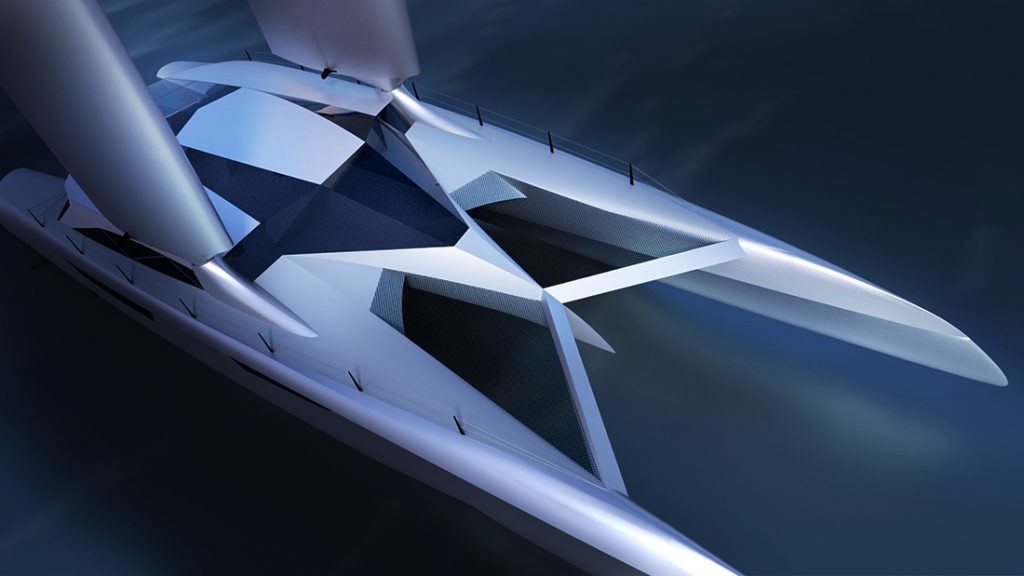
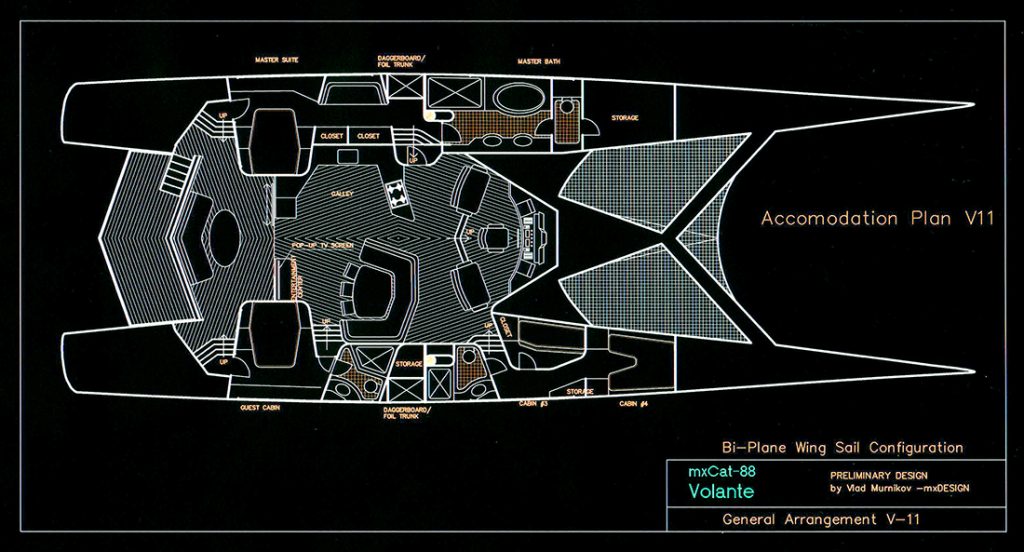

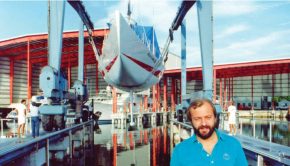
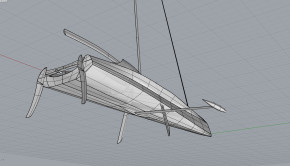
 We’ll keep your information safe.
We’ll keep your information safe.